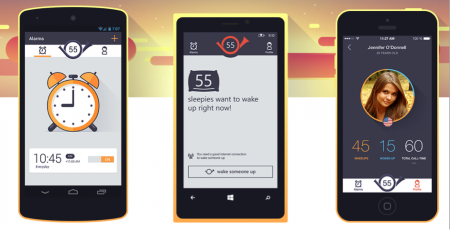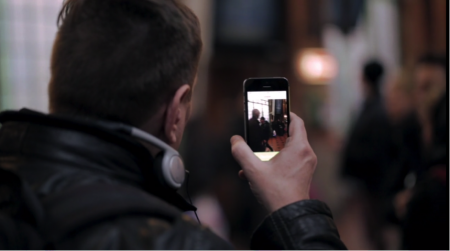Stay aHead: Wakie, GoodSAM and Be My Eyes
With the popularity of apps like Tinder, using your smartphone to connect with strangers is nothing new. But what happens if you apply this trend to everyday problems, rather than entertainment or social hook-ups?
Below we look at three apps that promise to harness the power of crowdsourcing in genuinely useful ways – from waking up to getting emergency medical care. Where would your limits lie?
Wakie connects people from across the world for a very specific purpose; it’s a ‘social alarm clock’. There’s nothing like a phone call to force you out of your slumber and Wakie will arrange just that: select your time and a member of their “fun, friendly community” will give you a quick call to wake you up. It’s a brief interaction – calls last a maximum of one minute and no phone numbers are visible or exchanged.
It may not be everyone’s cup of tea but with over 1.5 million members across 80 countries, the concept clearly has traction, and it’s a sign of just how accepting we’ve become of intimate interactions with people we don’t know.
There are plenty of possibilities for brand hook-ups here, too. Offering your customers the chance to be woken up by Justin Beiber singing Morning Has Broken? It might just cause a stir.

The GoodSAM apps aims to connect users in emergency situations with a network of local, medically trained good Samaritans. When you issue a call for help through the app nearby ‘responders’ are alerted to your location. The app also automatically calls the emergency services and contains a crowd-sourced database of defibrillators. As the website points out, receiving basic life support as quickly as possible can help save lives.
Only trained medics and registered first aiders can sign up as responders, so you should be in good hands. The concept obviously relies of having enough active volunteers and high awareness of the service, something which seems to be growing in the UK, US and Australia.
Be My Eyes uses live video chat to connect blind people with volunteer helpers around the world. A blind or partially sighted person can use the app to request assistance; their smartphone acts as a viewfinder. A helper will be able to access a live video feed, speak to the blind user, answer questions and describe what they are seeing. This could be anything from the expiry date on a bottle of milk to understanding new surroundings.
Currently available for iPhone, the app is free, non-profit and open source. According to the founder, around 99,000 volunteers signed up in the first 12 days. Participation of volunteers is incentivised by tracking how many people you’ve helped, earning points to boost your status within the volunteer community.

These apps are all united by the use of technology to crowd source good deeds. Connecting with strangers will bring up inevitable questions of safety but, with the probable exception of Wakie, these apps mimic situations where people may already be relying on help from nearby strangers.
All are examples of taking existing, popular technology and applying it to a greater need. If the best products and initiatives are those that are of genuine use to people, this should be an approach that more companies and campaigns begin to explore.